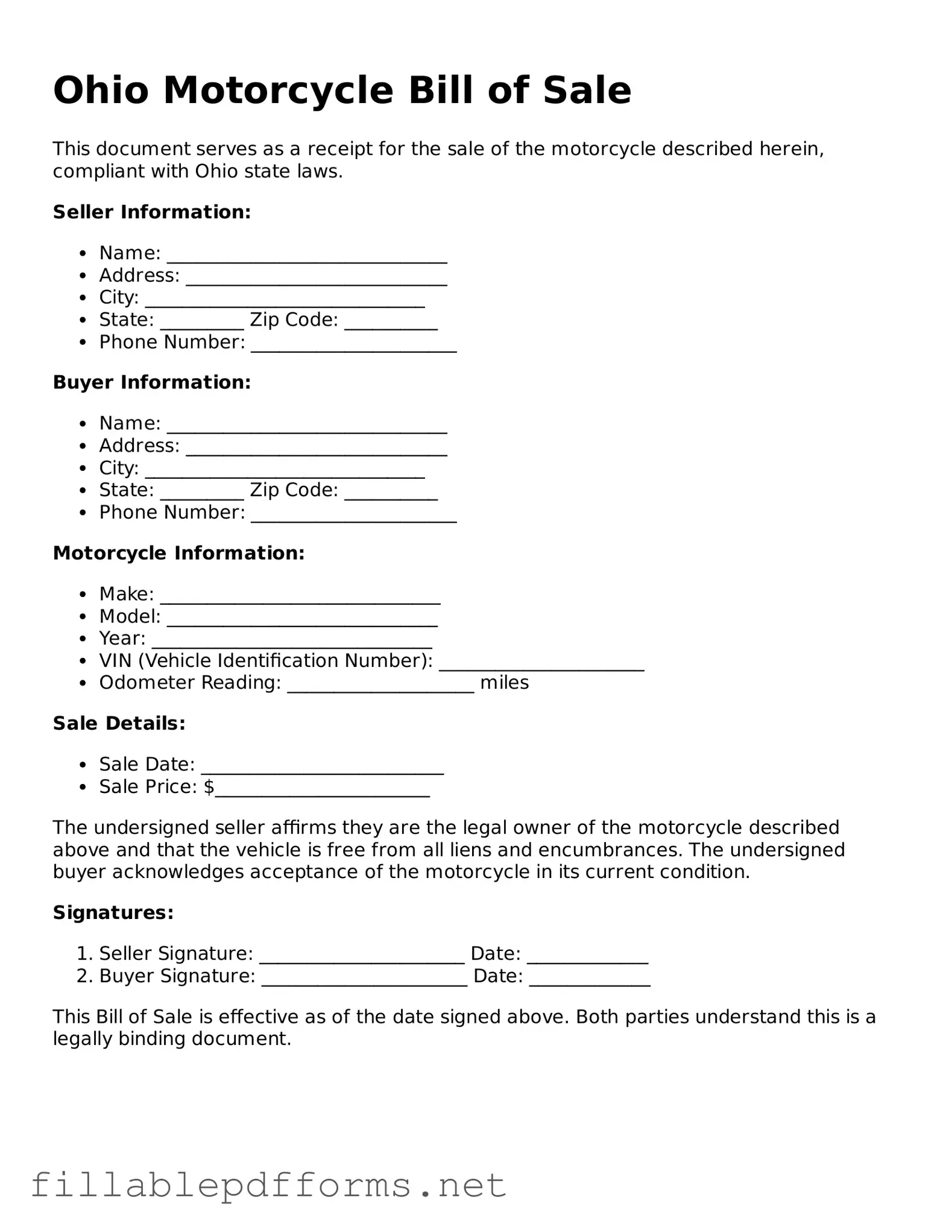Attorney-Verified Motorcycle Bill of Sale Form for Ohio State
The Ohio Motorcycle Bill of Sale form serves as a crucial document that records the transfer of ownership of a motorcycle from one party to another. This form includes essential details such as the buyer's and seller's information, motorcycle specifications, and the sale price. Properly completing this form ensures a smooth transition of ownership and can protect both parties in the transaction.
Launch Editor Here
